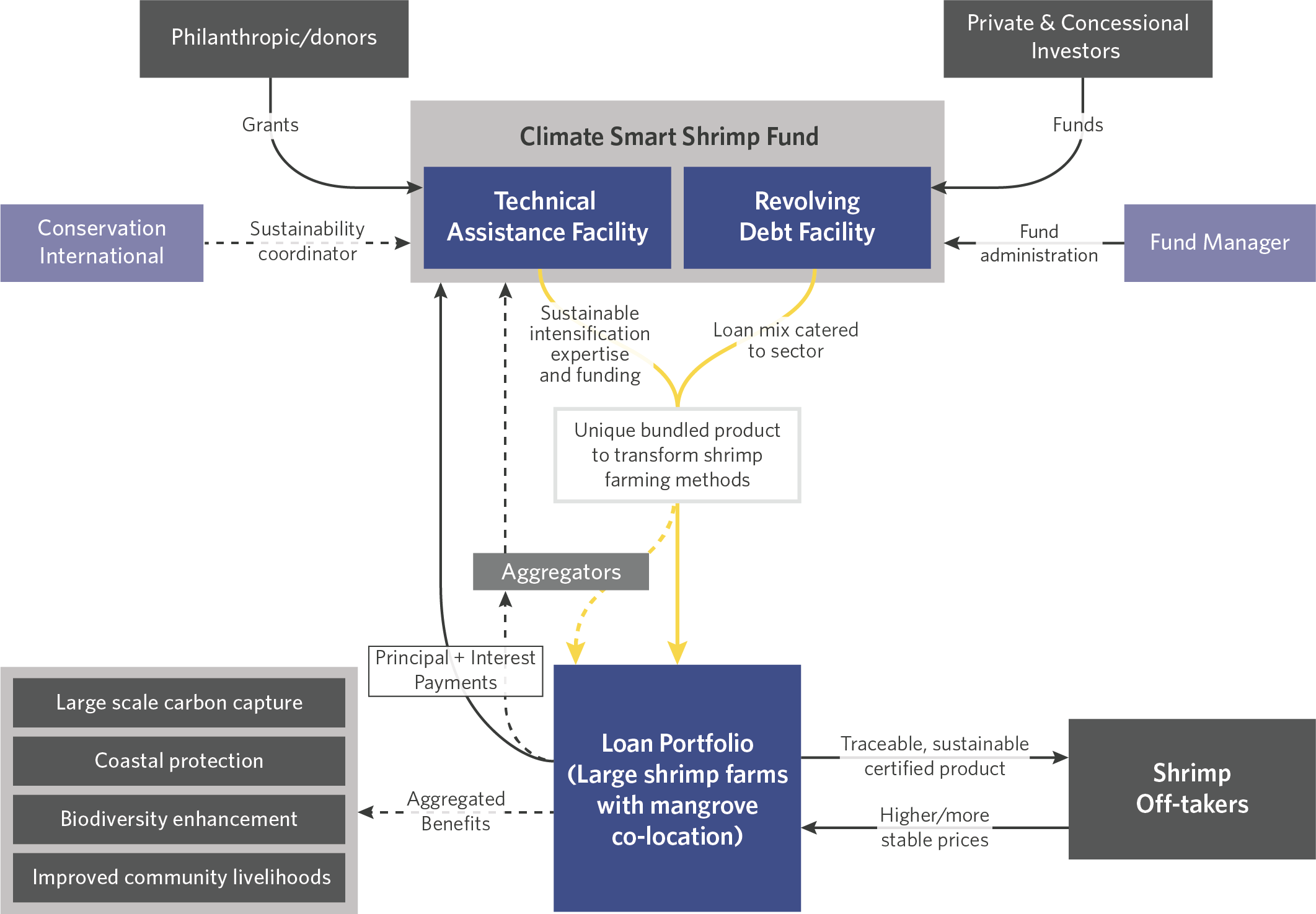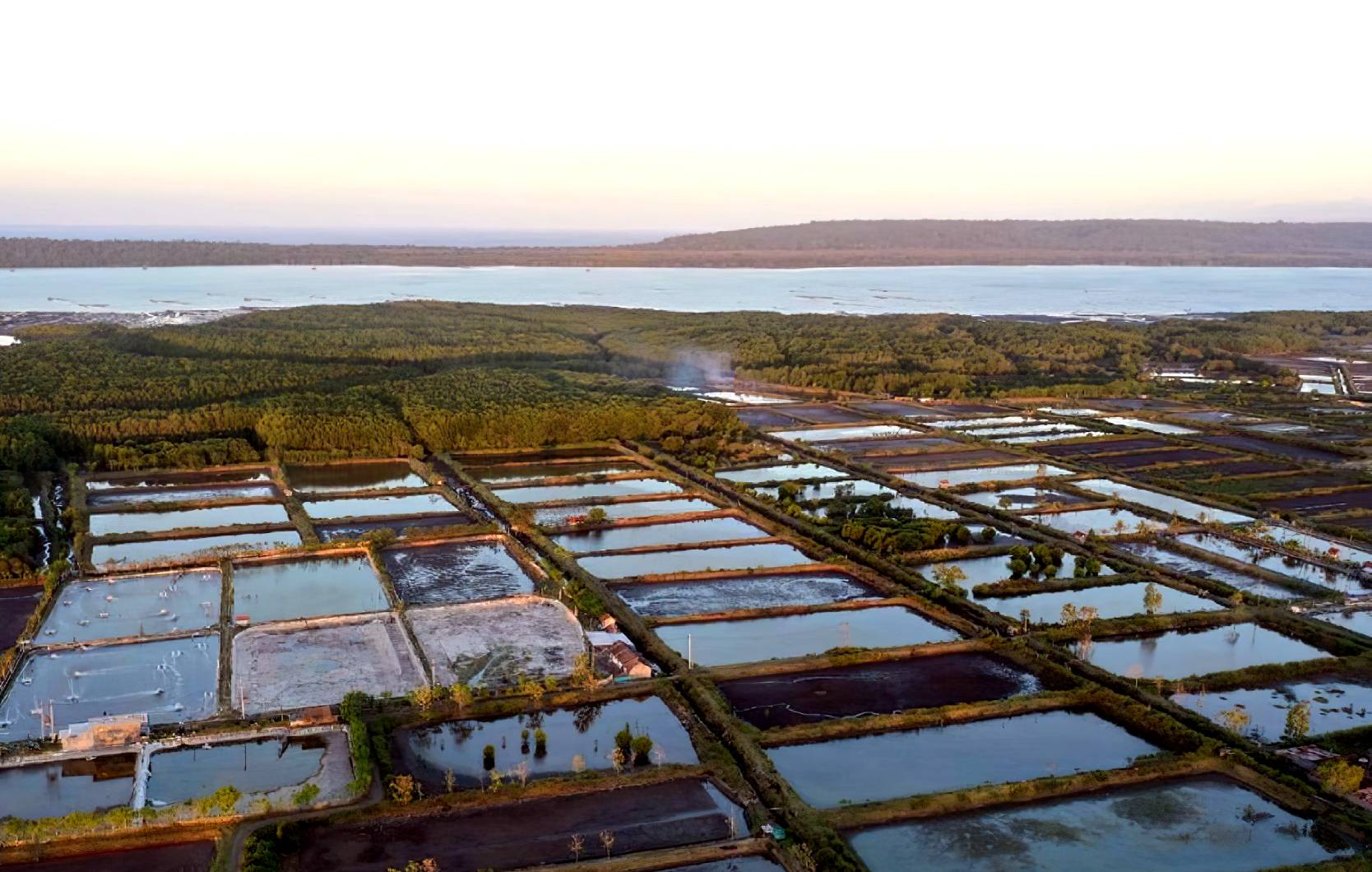Food security remains an enormous challenge as the world moves closer to global warming beyond 1.5°C above pre-industrial levels. Global food production needs to increase by at least 50% by 2050 to meet demand.
Within this context, the shrimp sector is now the world’s fastest-growing protein source. However, the sector is not without its challenges. The establishment and expansion of shrimp farms in intertidal zones have resulted in the loss of nearly 250,000 hectares of mangrove forest over the last two decades, while risks related to human and labor rights abuses, as well as viral disease outbreaks, have limited financing available for farmers on the ground.
Interventions that improve production efficiency, offer adaptation benefits, and sequester GHG emissions will therefore be highly valuable in helping the sector realize sustainable growth.

